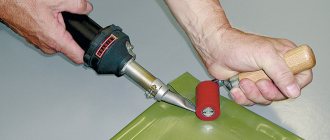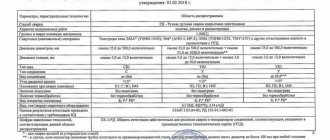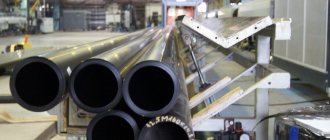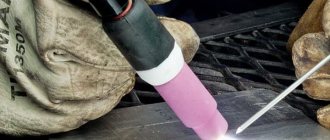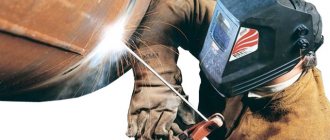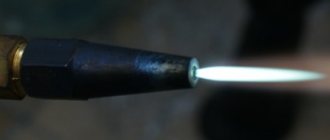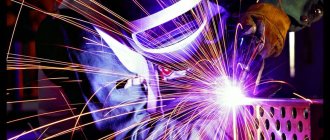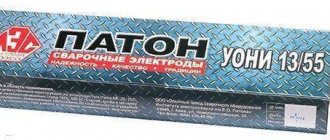A pipeline means an engineering communication in which the working substance is supplied through pipes (water, gas, oil, etc.). To ensure a high-quality supply, it is necessary not only to lay it correctly, but also to carry out repair and maintenance work from time to time. Here you just can’t do without joining the elements together. Let's look at what pipe welding is, how to weld pipes using electric welding, and what techniques need to be applied in practice to create a sealed pipeline.
Types of pipelines
Pipelines are divided into types based on the conditions of their use. Basically, the type is determined by the hazardous production facility at which they are used, as well as by the conditions themselves and the environment that passes through them.
The following types exist:
- Main oil, gas and product pipelines;
- Hot water and steam pipelines;
- Internal and external gas pipelines;
- Technological;
- Sewage and water pipelines.
I make pipelines from various materials, mainly: steels and alloys, as well as polymer materials. The article will not consider pipes made of concrete, ceramics and other non-weldable materials.
Pipeline classification
Experts classify such engineering structures according to several main factors:
By functional purpose:
- Trunk. They are laid to transport various substances over long distances. As a rule, they pump gas, oil, and water. They must be equipped with pumping stations.
- Technological. They are used in most industrial enterprises to provide production equipment with the liquid and gaseous raw materials necessary for technological processes, such as gas, steam, water, certain petroleum products, and compressed air. Also, quite often such pipelines are used to transport manufactured products.
- Utility networks. With their help, hot and cold water and steam are supplied to household consumers. Such pipelines are characterized by rather complex installation, since their normal functioning requires many bends, transitions, and distribution connections.
- Ship and machine. They are usually installed on offshore production platforms and large vessels.
By location:
- Ground and above ground. To lay overhead pipes, a variety of beams, trestles, and supports are used to ensure that the pipes are held above the ground surface.
- Underground. They are laid in trenches or in special channels.
- Underwater. Lay along the bottom of lakes, rivers, seas.
- Floating. Using special devices they are kept on the surface of the water.
By type of transported material:
- Gas pipelines. They can be both main and communal. Distribution stations are installed along the route of laying this type of pipeline. For the construction of main gas pipelines, pipes with a diameter of up to 1.5 meters are used. And for laying utility gas pipelines, rolled metal pipes with a cross section of up to 2 inches are used.
- Oil pipelines. With the help of such main and utility pipelines, both oil and its processed products are delivered to processing plants. They are laid not only above ground, but also underground, and even underwater.
- Tap water. As a rule, these are utility systems for supplying cold and hot water to domestic and industrial consumers. Recently, more and more often they are laid using metal-plastic pipes. But sometimes highways are also built.
- Sewer. With their help, liquid household waste is removed from buildings for various purposes.
According to the ability to withstand a certain pressure of the material transported through pipes:
- Low pressure. They are laid to transmit liquid and gaseous substances under pressure up to 12 atmospheres.
- Medium pressure. For transportation of various products in liquid or gaseous state with pressure in the range of 12…25 atmospheres.
- High pressure - guaranteed to withstand pressures of more than 25 atmospheres. Traditionally these are gas and oil main pipelines.
Pipelines can also be built taking into account the need to withstand certain temperatures and withstand the degree of aggressiveness of the transferred substances.
How to weld pipes - Welding methods
There are currently more than a hundred welding methods, but in practice no more than 4 methods are used. We will consider the main ones.
Manual arc with piece electrodes
One of the most common methods of welding pipes in installation conditions. It is used due to the simplicity of the equipment and the wide range of welding materials.
This method is used to weld all types of pipelines, from a diameter of 16 mm (although more often from 25 mm) and a wall thickness from 2.5 mm (although more often from 3 mm) to several meters in diameter and a thickness of up to 60-100 mm .
Welding is performed in all spatial positions: lower, vertical, horizontal and ceiling.
To complete the process, you only need a welding machine (inverter, rectifier, transformer, etc.) and electrodes and that’s it. There is no need to carry more gas cylinders or use additional flux to protect the welding arc and pool.
Welding in argon with a non-consumable electrode
Argon welding (TIG welding) is used when it is necessary to weld pipes made of structural or low-alloy steels (black steels) with a small wall thickness of up to 3.0 mm (1.8-2.0 mm is the most common thickness when working with argon arc welding).
This method is also used in conjunction with manual arc welding, when the root of the seam is welded in an argon environment with a non-consumable electrode, and then filled and lined with a manual arc welding. This method is called KRAD - combined manual arc welding. It is used when high demands are placed on the weld and the joint thickness is more than 6 mm.
Welding in an argon environment of pipelines with a wall thickness of more than 3 mm is used for welding high-alloy steels, chromium-nickel and titanium alloys, that is, where it is necessary to ensure a high degree of metal protection during the welding process.
A useful article about what the NAKS register of welders is, why it is needed and how to check certificates through it.
Semi-automatic gas welding
The use of semi-automatic welding for pipelines most often occurs in large industries. This is due to the fact that this method provides high productivity, especially in cases where large thicknesses need to be welded.
Using semi-automatic (mig/mag) welding, thicknesses ranging from 2 mm to 60-100 mm can be joined.
The use of this method in field conditions is infrequent, since it requires rather bulky equipment, in particular, a gas cylinder, and there should be no drafts or gusts of wind during the process. Otherwise, this leads to blowing out of the gaseous medium and the formation of defects.
Semi-automatic welding can be performed not only in a gas environment but also using flux-cored wire. In this case, mobility increases because gas equipment is no longer needed (if the wire is self-protecting, since there is a flux-cored wire that also needs gas protection).
Using self-shielding flux-cored wire is more expensive than using piece electrodes, although the process is faster, there is still a clear increase in cost.
You can learn more about how to set up a semi-automatic welding machine by clicking on the link.
Under a layer of flux
Performing the process under a layer of flux is used when it is necessary to weld large diameters and large thicknesses. This process allows you to boil up to 10-12 mm in thickness in one pass. It is used in large construction or production.
The method is highly productive, but at the same time it requires expensive equipment - pipe welding bases, rotators and welding heads.
Selecting Electrodes
For welding steel pipes using the electric arc method, the diameter of the electrodes is selected according to the thickness of the mounted rolled product. It is important to take into account the characteristics of the electrode rod and coating. Features of electrodes used for pipeline installation:
- Electrodes MR-3, ANO-21, ANO-24 are used to weld seams that do not experience high pressure (drainage systems, waste pipelines), where the flow rate is insignificant. Can work on alternating current.
- Universal SSSIs are recommended for use by beginners; they weld metal well and form a strong connection. For large volumes of electric arc welding, they are not effective due to the low speed of seam formation and the need for constant control of the arc.
- LB-52U - electrodes from Japanese manufacturers are used for installation of process and main pipelines designed for high pressure. The LB-52U is characterized by smooth combustion even with a slight “sag” in the voltage in the network.
- Electrodes from the Swiss company ESAB are distinguished by good seam quality; manual arc welding of high-pressure gas lines is often carried out by them. OZS 12 is used for low-carbon steels, OK 46 is universal. OK 53.70 and OK 74.70 are cooked on a current of any polarity; the coating contains a protective flux that inhibits oxidation of the melt pool.
- Domestic LEZ LBgp is used for the finishing layer on butt joints of thick-walled pipes and for welding thin-walled pipes.
- E42A, UONII-13/45, E-09H1MF are used for the installation of heating systems made of alloy steels; thick coating of type D forms a slag layer that protects the molten metal from oxidation.
The trouble-free operation of pipeline networks largely depends on the electrodes. The steel of the rod must correspond to the grade of rolled steel; the type of coating determines the degree of protection of the melt pools.
When choosing a method for installing a process pipeline or utility networks, take into account the thickness of the rolled product, steel grade, and working load on the metal. Thick walls are welded using multi-layer seams with preliminary cutting of the edges. It is enough to clean thin-walled rolled products before carrying out work. Having a welding machine, you can weld the joints yourself.
Selection of welding materials (electrodes, gas, etc.)
The choice of welding materials is made based on the material from which the pipes are made. Most often it became 4 groups:
- Low alloy and structural.
- Carbonaceous.
- Heat-resistant alloyed.
- Highly alloyed.
Welding electrodes for low-alloy, structural and carbon steels are very similar. Typically the following brands are used:
- SSSI 13-55;
- TMU-21U;
- TsU-5;
- SSSI 13-45
- TMU-46, etc.
For heat-resistant steels (KhM steels operating at temperatures of 500-570°), the following grades of electrodes are used:
- TML-1U;
- TsL-39;
- TML-3U, etc.
High-alloy corrosion-resistant steels are welded with electrodes:
- TsT-15;
- TsT-26;
- EA-400/10U, etc.
New electrodes must be tested before welding pipelines. When checking, you need to pay attention to the appearance of the electrode coating, which should not have chips, swelling, or sagging of the coating.
After a visual check, you need to try to weld a test piece with electrodes, and you need to pay attention to how the arc is ignited. The arc should ignite easily and burn stably. The electrode coating should melt on all sides without forming an overhanging peak, and the slag should be easily removed (in the case of rutile electrodes, it falls off on its own).
If the argon process or semi-automatic welding is used, then in this case a welding wire is used. The choice of wire as well as electrodes is made according to the type of steel being welded. For welding in argon, solid wire is used, and for semi-automatic welding, both solid wire and flux-cored wire are used.
The following wires are used for low-alloy and structural steels:
- Sv-08G2S;
- Sv-08GS.
For alloyed heat-resistant steels, the following grades of wire are used:
- Sv-08ХМ;
- Sv-08HMFA;
- Sv-08KhGSMFA, etc.
The most commonly used gases for steels are:
- Pure argon.
- Argon mixed with helium and/or carbon dioxide.
- Pure helium.
- Pure Carbon dioxide (CO2) - for semi-automatic.
Non-consumable electrodes that are used when welding in an inert gas environment are selected in accordance with GOST 23949-80:
- Made from pure tungsten.
- Made from tungsten with lanthanum oxide.
- With thorium oxide
- Tungsten with yttrium oxide.
The most commonly used electrodes are made of pure tungsten, marked - EHF.
Do you know how much an oxygen cylinder weighs? If not, follow the link.
Electroslag welding
Electroslag welding (ESW) allows you to weld metal parts up to 60 cm thick. The principle of ESW is that a slag mass is placed in the gap between the ends of two metal parts being welded. This mass is melted by an electric arc created between the electrode and the metal parts. After the slag has melted, the arc goes out, and a current flows through the slag mass, which, with correctly selected welding parameters, evenly heats the weld pool to high temperatures.
A filler material is added to the slag mass, which melts along with the slag and the edges of the parts being joined. Since the molten metal is heavier than the slag, it falls down the gap and solidifies there. The molten mass rises upward. This process results in welding of the vertical gap.
To prevent the melt from flowing out of the gap, special plates - sliders - are placed on both sides. They are cooled by water and gradually move upward.
Electroslag welding diagram
There are three methods for implementing EHS:
- A filler electrode , which is located in a horizontal plane, is continuously fed into the melt.
- Plate electrodes are used, which replace sliders . By bridging the gap, an effective melt is created, which allows you to join the gaps of parts without adding an additive.
- Combining the first two methods . In this case, plate and consumable electrodes are used.
Advantages and disadvantages of EHS
The main advantages of EHS:
- protection of the seam from exposure to the atmosphere with liquid slag;
- low sensitivity of the process to changes in the current value and even its short-term interruption;
- welding thick metal in one pass;
- ability to weld raw ends of parts;
- low power consumption and low cost of slags;
- high efficiency.
Disadvantages of EHS:
- it is possible to weld only vertical seams or seams at an acute angle to the vertical;
- when the process is interrupted, defects arise that cannot be corrected;
- the seam has a coarse-grained structure , which limits the use of the product at low temperatures (the seam becomes brittle);
- To organize an EHS you need to have a fairly large number of devices.
Equipment
To perform EHS operations, automatic or semi-automatic machines are used. The second type of equipment is rarely used, since it is quite difficult for a person to manually move heavy equipment vertically.
EHS machines usually include:
- Automatically moving welding machine with copper slides;
- power supply;
- Flux and wire feeders;
- control system.
Depending on the design, machines for EHS can be suspended or self-propelled (rail or trackless type).
Types of connections (butt, corner, lap, T)
The main types of connections when welding metal pipes are:
- Butt joint (“butt” - denoted by the letter “C”) - in this case, the pipes are welded end to end;
- corner connection (“angular” - indicated by a beech “U”) - the ends of the pipes are at an angle relative to each other;
- T-joint - the arrangement of one product to another at a right angle, forming, as it were, the letter “T”. This type of connection, according to GOST-16037, is not used for pipelines (only for sheet structures in accordance with GOST 5264, designated by the letter “T”)
- Lap joints - roughly lap joints - are when one pipe is inserted inside another and welded (denoted by the letter “H”).
For pipelines, the types of connections are determined by GOST - 16037. It describes all types of butt, overlap and corner connections that are acceptable for pipelines. Dimensions and tolerances for deviation of finished connections are indicated.
Manufacturing of detachable connections
To make detachable connections, you will need to weld the workpiece to the flange. Work is carried out in the lower position. The best option is semi-automatic arc welding. Welding of flanges can be performed using a non-rotating seam, and an operational method can be used.
The steel pipe is joined at an angle of 90° to the plane of the flange, thus simplifying the work of assembling detachable joints. The operation of welding a part to a flange is carried out similarly to the operation of connecting pipes.
Preparing pipes for welding
Preparing a pipe for welding is carried out in several stages, we list them:
- Stripping the pipe at a distance of 20-30 mm from the end on the outer surface and at least 10-15 mm on the inner surface.
- Dust removal and degreasing of lumps.
The pipe is cleaned with an abrasive tool mounted on a grinding machine, a file with sandpaper, etc. The cleaned surface should not have rough cuts.
The end of the surface should be 90 degrees in an ideal situation. In practice, deviations are allowed as shown in the figure below.
It is also worth mentioning the dents that occur on pipes. If the depth of the dent is less than 2.8-3.5% of its diameter, then it must be straightened using clamping devices or squeezed out using jacks.
When the depth of the dent exceeds the above values, it is necessary to remove the deformed section of the pipe. The process of straightening dents is performed without heating (cold) and with its use.
Assembling joints
Pre-assembly of joints greatly simplifies the task. The features of this stage are as follows:
- The pipes are fixed in clamps. If the fastening is carried out at three points, the fixation will be more reliable.
- If there is only one connection point, it is recommended to start welding from the reverse side.
- If the walls are about 3 mm thick, then the thickness of the rod should be 2.5 mm.
The most difficulties arise with welding pipes that cannot be secured in a vice.
How to join pipes
To assemble pipes, it is best to use centralizers or special mounting devices (for example, corners with studs that are welded to the pipe).
It is best to use centralizers that are not welded to the pipe itself.
In cases where electric welded pipes are used, it is necessary to shift the longitudinal joints by 100 mm or more. If the pipe has a diameter of less than 100 mm, then we shift the longitudinal joints by a length equal to three times the thickness of this pipe.
Having installed the pipes in the centralizer, the joint is assembled using tacks. The number and size of tacks depends directly on the diameters of the pipes being connected.
When the pipeline has a diameter of less than 50 mm, then 2 tacks are made, placing them on diametrically opposite sides. If the diameter of the pipeline is within the range of 50-100 mm inclusive, in this case two or three tacks are made, if it falls within the range of 100 to 400 mm, then 4 tacks are made, and if more than 400 mm, then the tacks are placed at the distance indicated in the table below .
It is advisable to tack using electrodes with a diameter of 2 - 2.6 mm (at most 3 mm).
After the tacks are made, their surface is cleaned of slag and metal splashes. If unacceptable defects are visible on them, the tack must be removed and remade.
If it is necessary to weld on the backing ring, then assembly will be performed as follows:
- Install the ring inside the pipe.
- Tack it at least 2 points from the outside and weld it to the pipe.
- Clean the completed seam.
- Slide the second pipe onto the ring; the gap should be maintained at around 4-5 mm between the seam and the edge of the second pipe.
- Weld the ring to the 2nd pipe.
- Clean the previous seam and fill the groove.
Nuances of preparation and execution of work
Welding a steel pipe, especially with a rotary joint, is quite simple. But before doing the work, you need to prepare properly.
The surface of the ends of steel pipes is treated with a metal brush, then with a solvent, and if the thickness is over 3 mm, the edges are cut on one or both sides. Steel pipes should be connected and joined so that they lie in the same plane, without distortion.
When connecting and joining individual parts, tacks with a length of at least 3 mm are used for reliable fixation. The size of the tacks and their number depend on the diameter of the steel pipes.
Their minimum number must be at least 3, every 120°. The consumption of electrodes during welding should be taken into account. When operating with high currents on large cross-section pipes, the flow rate is significantly higher.
Installation of a galvanized pipe will require treating the ends of the workpieces with hydrochloric acid, which will prevent the zinc from burning out when heated.
Protection of the zinc layer on pipes can be carried out using HLS-B submerged arc welding. Before work, you will need to apply a thick layer of the substance to the edges of the pipes. Work is carried out with an increased level of oxygen supply to the burner flame.
The wire must be made based on UTP alloy. When performing work, it is necessary to melt the filler material onto the heated metal. The flux prevents the zinc from burning out, and the residues are removed from the pipe after completion of work.
Having completed the connection in this way, the consumer receives a high-quality seam that does not require corrosion protection.
How to weld a pipe - welding technology
The execution of pipe welding depends on the chosen method. Let us consider in detail the most commonly used welding methods: manual arc welding (MAW) and inert gas welding with a non-consumable electrode.
For manual arc
For manual arc welding of pipes, the general sequence of technology is as follows:
- Check the quality of edge preparation and workpiece cleaning.
- Ignite the welding arc, retreating 5-10 mm from the bottom point (provided that we are welding a non-rotating joint). If we are welding a rotary joint, then we start in any place convenient for us.
- Wait for 2-3 seconds for the metal to warm up and a weld pool to form.
- Move the electrode up the weld.
- Perform the root pass without oscillating movements.
- Places where the welding arc breaks must be cleaned with an abrasive tool.
- Before completing the process, it is necessary to return the electrode to the already deposited (as if backwards) metal and break the arc on it (otherwise there will be a defect - a crater)
- Clean the root seam.
- Inspect the weld seam for defects; if there are any, select the defect using an abrasive tool and perform welding.
- Depending on the thickness, we perform either filling or facing seams. When performing them, we perform oscillatory movements with the electrode.
- The beginning of each subsequent layer should be shifted by 10-30 mm from the beginning of the previous one. So that those sections of the seam that overlap each other “locks” are shifted. The larger the pipe diameter, the greater the displacement should be.
- Upon completion, we clean the seam and heat-affected area from splashes of metal and slag.
- Each seam must be inspected for defects; if there are any, select them and weld them.
- We put a mark (in cases where this is a critical welded joint).
If you are just starting to understand the process, we recommend reading our article - electrode welding for beginners so that everything is clear to you.
For welding with non-consumable electrode in a gas environment
The technology of non-consumable electrode welding of pipelines in an inert gas environment is very similar to the technology of manual arc electrodes.
The general technological sequence is as follows:
- Just as in the previous case, we check the preparation and cleaning of the edges.
- Before igniting the arc, it is necessary to purge the gas lines; to do this, press the keys on the burner and purge the gas for 10-15 seconds.
- The arc is ignited, as with RDS, retreating 5-10 mm from the bottom point.
- The welding torch moves along the joint and the welding wire is fed towards it (the angle between the torch and the welding wire is about 90°).
- In places where the weld is broken, it is also necessary to clean the seam.
- Upon completion of the root pass, the seam and the heat-affected zone are also cleaned, as with RDS.
- When making the next layer, it is also necessary to perform an offset to overlap the “locks”
- When making a facing or filling seam, the torch as an electrode performs an oscillatory movement. most often these are Z-shaped or crescent-shaped movements.
- After each completed layer, it is inspected for defects.
- In cases where only the root of the seam is performed using the argon-arc method (a combined method is used), subsequent layers are performed using the technology for manual arcing with piece electrodes.
- After the weld is completed and the arc breaks, argon continues to be supplied for another 5-10 seconds, blowing onto the deposited metal.
- If you need to weld stainless steel, then the joints must be protected from the reverse side. This is done by filling the internal space of the pipe with argon or coating the edges of the pipe from the inside with specialized flux pastes.
Manual electric arc method of welding pipelines
Electric arc welding is the most popular method of joining large-diameter steel pipes and workpieces for wiring of indoor plumbing systems.
Manual electric welding is also used in the assembly of main pipelines. In this case, it is used to tack and pass the root of the seam.
The lack of convenience associated with non-rotating joints and lack of visibility force welding to be carried out using an operational method.
With this method, the joint is first welded in visible areas. Then a window is cut out in one of the steel pipes.
From the inside, the joint is scalded along the entire available circumference. After this, all that remains is to apply a steel patch, gradually welding and heating the metal, and close the window with it.
Welding the joint begins from the bottom, and it is important to know and be able to perform ceiling seams. It should be remembered that to work in the ceiling position, you will need to increase the welding current on the machine.
After the ceiling, you can weld the side surfaces of the steel pipe and gradually move on to working in the lower position. GOST prescribes to ensure the reliability of the joint to work in 2 passes. The first is the root of the seam, the second is the main seam.
After the first layer, be sure to beat off the slag before the second pass. To do this, you will need a special hammer; often in production they use a simple chisel attached to a handle.
When connecting round and profile steel pipes, this is the main method along with semi-automatic and automatic electric arc welding. Its advantage is small deformation with low heating and better joint quality.
This makes it possible to use the operational method of electric arc welding as the main one when laying large cross-section pipelines.
When enlarging sections of pipe lines, semi-automatic pipe welding is used. In this case, the speed of work increases, while the quality of the seam remains at a high level.
How to weld two pipes - welding modes
Below are the main parameters for manual welding with stick electrodes
For argon-arc it is necessary to control more parameters than for RDS. Below are the main parameters for RAD.
How to weld pipes - welding fixed and rotary joints
In this section we will dwell in more detail on welding fixed and rotary pipe joints. Most often, a welder has to deal with non-rotating joints, so let’s start with them.
As already mentioned, welding a vertical joint should begin from the bottom point, retreating 10-40 mm and work upward.
The process must be carried out in reverse in a stepwise manner with a pipeline diameter of ≥219 mm. The length of the welded segment is 150-230 mm. To fill it, you can simply boil half the circumference of the pipe. Each subsequent layer must be shifted to overlap the locks by 10-30 mm.
If you need to weld a non-rotating horizontal joint, the starting point can be any convenient place. Otherwise, the requirements are the same as for vertical joints.
Below are diagrams for welding horizontal and vertical joints by one and two welders.
Now let's look at how rotary joints are welded. The process is performed in the most convenient position for welding - LOWER. The electrode should be at an angle of about 30° to the surface of the pipe.
The root passage is boiled back in a stepwise manner, the length of the section is usually a quarter of the circumference. Filling and lining are performed by continuously rotating the joint. The rotation speed is chosen equal to the speed of the process.
Below in the diagrams you can familiarize yourself with the method of welding rotary joints when turning 180 and 90 degrees.
Preparation
The quality of work depends not only on the brand of electrodes and the professional skills of the performer. An important role in this is played by the preliminary preparation of the surfaces to be welded. Its essence comes down to performing several operations:
- the compliance of the two elements being connected is checked with the requirements of the selected welding method. It is important to take into account that the pipes must not only be of the appropriate diameter, but also have the same wall thickness. Otherwise, it will not be possible to warm up the thick wall well or, conversely, the thin wall will simply melt;
- There should be absolutely no defects on the surfaces being welded. Kinks, cracks and deformations of any kind are not allowed. If neglected, “modest” deficiencies under the influence of thermal expansion will grow into a big problem and lead to the destruction of the structure;
- Under no circumstances should a distortion be allowed in the cut of the workpiece, which will be welded at an angle of 90 degrees. Due to such a seemingly small defect, the seam will eventually be weakened and the likelihood of the joint being destroyed during operation is high;
- the edges are cleaned to a metallic shine. For this purpose, you can use any metal abrasives: brush, sandpaper or power tool;
- During the preparation process, traces of grease, paint, rust and other contaminants are removed from the surface. The most effective cleaners in this regard are chemical solutions.
Welding pipes with water
If you need to weld a pipe from which water is leaking, and this happens quite often, there are a number of tricks that need to be applied.
We will not start welding from the bottom point, but step back from it even higher by 20-40 mm and rise up. Due to this, we warm up the metal of the pipe; it is also worth slightly increasing the current strength by 10 percent of the recommended one.
After the pipe metal has warmed up, you need to return to the point where the welding began and weld the area where the water is flowing. If suddenly the arc breaks and the electrode goes out, then you need to rekindle it by stepping back a little higher and heating the metal again. It is best to use rutile-coated electrodes for this method and pull-off welding. Welding points should be tried to be placed as closely as possible to one another.
Welding rotary and non-rotary joints
Pipe welding technology changes slightly if you need to connect joints of this type. The features are as follows:
- Cooking is carried out using a special rotator, for which the required speed is set.
- Care is taken to ensure that the weld pool is positioned correctly.
Grooving edges for butt joints
Similar work can be done with the usual workpiece fastening, the pipe is rotated approximately 90 degrees. The most difficult thing to cook is when turning the workpiece 180 degrees.
Welding of small diameter pipes
For small-diameter pipes, especially for automatic pipelines (KIP), where the pipe diameter is 10-16 mm, manual argon arc welding with a non-consumable electrode is used. If the pipes used are electric welded, then they must maintain a displacement between the longitudinal seams of at least 3 pipe wall thicknesses.
As a rule, they are all welded in one pass. The main difficulty is the high risk of burning through thin metal. To avoid this, you need to use the shortest arc possible, set the welding current to the lowest value, and also try to do it as quickly as possible.
Requirements for the quality of welds during pipeline construction
The main documents that regulate the rules of work during the construction of pipelines for various purposes are SNiPs, on the basis of which the “Consolidated rules regulating the procedure for performing welding work and the quality of welds” SP 105-34-96 were created.
These documents set out the requirements for qualification tests of welders, rules for preparing pipes for work, tasks for quality control of completed connections and conditions for repairs and correction of defects made during welding.
In addition, there are technological instructions for carrying out welding work on pipelines (VBN A.3.1.-36-3-96 and VSN 006-89) and for methods of welding quality control (VSN 012-88).
These regulatory documents reflect the main provisions of the technologies used in manual and automatic welding during the construction of pipelines for various purposes.
The provisions of these instructions do not affect the construction of pipelines for the transportation of aggressive and corrosive products.
The list of documents regulating such a process as pipe welding includes GOST, which sets out the requirements for the materials used.
In the CIS countries, steel pipes for pipeline construction are selected in accordance with GOST 8731-8734 group B.
Welding materials required for the construction of pipelines are selected in accordance with the requirements of GOST 9466–9467, and control of the completed connections must be carried out according to the rules set forth in GOST 7512 and GOST 14782.
Abroad, international and national standards are used as regulatory documents when performing welding work on pipelines. Among the most common ones used in the USA and developed countries of Europe are API 1104, BS 4515 and API 5D.
Quality control of connections is carried out in accordance with the requirements of the international standard ISO 8517 or its European equivalent EN 25817.
Welding large diameter pipes
The main features of welding joints of large-diameter pipes are that they are welded by several welders, usually two people. This is especially important when welding chrome-molybdenum (HM-ov) steels. There, this process is carried out by 2 welders simultaneously, in a reverse stepwise manner, welding sections up to 250 mm long.
Also, the process on large diameters is performed using mechanized rotators (rotary joint). Edge preparation is most often also done mechanized using a chamfer, or the chamfer is performed directly at the factory during pipe production.
For large diameters, mechanized methods are used, such as: semi-automatic in inert gases, under a layer of flux, and so on.
For large diameters, argon-arc is usually not used in its pure form, but only in a combined method (KRAD), when the root layer is boiled in an argon environment, and filling occurs manually using an arc or semi-automatically in an inert or active gas environment.
Welding of thick-walled pipes and through-hole
Thick-walled pipe welding technology
If the workpiece has a thickness of more than 20 mm, it is necessary to turn to the technology of working with thick-walled pipes. Using this method of welding pipes, the strength of the seam can be increased by 10–15%. As a rule, two welders are involved in such processing. One forms the seam, and the other is responsible for the thickness of the layer.
Recommended articles
- /articles/768-stykovaya-svarka
- Seam welding methods: classification
- Fusion welding: where it is used and how it is produced
Such work is performed in the following way:
- Initially, processing is carried out in the ceiling position, the thickness of the seam gradually increases, while the seam joint itself for thick-walled workpieces should be as smooth as possible.
- The next stage of processing occurs in a semi-vertical position.
- The electrode creates a horizontal platform.
- At the final stage, work should be carried out in the lower position, so electrodes with a thickness of up to 5 mm can be used.
Transmission welding of pipes
This type of welding is not known to everyone, or rather, not the type itself, but its correct and flawless execution. And if an experienced master is not always able to cope with this task, then there is no point in talking about novice specialists.
The pipe clamp should be treated first, since this will prevent root deformation. The number of gripping points is calculated depending on the size of the part. But the clamping must be done in such a way that the parts do not meet at the joints.
After this, all joints are cleaned. If defects resulting from transmission welding, such as cracks, are found, they must be removed. Only after finishing the cleaning can you start filling the seam. Although this operation is considered absolutely uncomplicated, sometimes up to 30% of the root is needed to fill the joint.
When carrying out work, it is recommended to leave a recess of approximately 1.5 mm for further cladding. Then the material will form a high-quality seam, filling this recess. At this stage of pipe welding, you need to pay attention to two nuances: the seam is filled at a calculated working angle, and a short arc is used in the work.
In the end, I would like to remind you once again that the process of welding pipes and the technology itself are determined by many factors that need to be taken into account when doing welding work. One of the main technological requirements is the continuity of the seam for any pipe welding method. That is, it must close exactly in the place where it began. Only in this case can you obtain a tight, strong and reliable connection.
Welding of pipelines at low temperatures
If there is a need to carry out welding work at sub-zero temperatures, a number of requirements must be met that will ensure high quality welded joints.
- Immediately before tacking, the metal in the area of the welded joint must be heated to a temperature of +20 - +40 degrees (so that you can hold it with your hand);
- the metal is heated before welding;
- It is possible to heat the metal using a gas flame method (cutter), as well as using an inductor.
Core Technology
The most common and popular technique is electric arc welding.
Yes, it has alternatives in the form of gas welding, but its undeniable advantages lie in simplicity, a minimal set of equipment and a result that meets the most stringent standards.
Even when designing main pipelines, this method is used. To achieve high quality, you must treat your work with full responsibility.
Safety precautions when welding pipes
Safety rules are written in blood, so it is very important to follow them when performing welding operations. We list the main ones:
- Before starting welding, check the quality of the cable insulation, as well as the grounding of the welding equipment;
- check the serviceability of gas equipment, whether there are any gas leaks, whether there are cracks or deformations on the cylinder;
- The welder must perform all operations in a fireproof welding overall and leggings;
- It is necessary to protect your eyesight and use a welding mask, and wear a protective shield while working with an abrasive tool.
Types of welded pipes
When choosing a method for welding copper pipes, you need to take into account their purpose, the tightness of the seam and other characteristics. In total, three types of welding are used: contact, gas and electric arc.
The most popular and promising method is electric arc welding with a non-consumable tungsten electrode and a filler component in the form of wire containing deoxidizers.
Nitrogen is used as a shielding gas, which makes welding cheaper.
But when welding thin-walled products, it is recommended to use argon.
